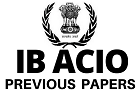sponsored links
AIDS - A Horrendous Disease
Overview
- What is HIV and AIDS?
- C Origin of HIV infection.
- Different ways of transmission of HIV infection.
- 0 Symptoms of HIV in different stages.
- HIV/AIDS in India.
- India’s initiative to control it.
- Available treatment for AIDS.
Acquired Immuno Deficiency Syndrome (AIDS) is the most dreadful disease in the history of mankind, which has caused a great havoc in the minds of people. World AIDS Day, observed globally on 1st December each year since 1988, is one of the eight official global public health campaigns marked by the World Health Organisation (WHO).
Government and health officials, non-governmental organisations and individuals around the world observe the day and are dedicated to raising awareness of the AIDS pandemic caused by the spread of HIV infection and mourning those who have died of the disease.
What is HIV and AIDS?
HIV stands for ‘Human Immuno Deficiency Virus’. It is a virus that attacks the body’s immune system, specifically the CD4 cells (T cells), which help the immune system to fight off infections. HIV reduces the number of CD4 cells (T cells) in the body, making the person more likely to get infections or infection-related cancers. Over time, HIV can destroy so many of these cells that the body can’t fight off infections and diseases.
AIDS on the other hand, stands for ‘Acquired Immuno Deficiency Syndrome’ which is the final stage of HIV infection and not everyone who has HIV advances to this stage. AIDS is the stage of infection that occurs when the immune system is badly damaged. When the number of CD4 cells fails below 200 cells per cubic millimetre of blood, it is considered to have progressed to AIDS.
Origin of HIV/AIDS
Scientists identified a type of Chimpanzee in West Africa as the source of HIV infection in humans. They believe that, the Chimpanzee version of the immunodeficiency virus (called Simian Immunodeficiency Virus or SIV) most likely was transmitted to humans and mutated into HIV when humans hunted these Chimpanzees for meat and came into contact with their infected blood. Over decades, the virus slowly spread across Africa and later into other parts of the world.
The earliest known case of infection with HIV-1 in a human was detected in a blood sample collected in 1959, from a man in Kinshasa, Democratic Republic of the Congo. (How he became infected is not known.) Genetic analysis of this blood sample suggested that HIV-1 may have stemmed from a single virus in the late l940s or early 1950s.
Different Ways of Transmission of AIDS/HIV
It is important to know the various ways of the transmission of HIV in a body. HIV is spread mainly by
- Having anal or vaginal sex with someone who has HJV, without using a condom or taking medicines to prevent or treat HIV.
- Sharing needles or syringes, rinse water or other equipment used to prepare injection drugs with someone who has HIV.
- From mother to child during pregnancy, birth or breast-feeding. In extremely rare cases, HIV is transmitted by oral sex, receiving blood transfusions contaminated by HIV, eating food that has been pre-chewed by HIV infected person, being bitten by a person with HIV, deep or open mouth kissing and so on.
HIV does not survive long outside the human body and it cannot reproduce outside a human host. It is not spread by
- Air or water.
- Moscuitoes, ticks or other insects.
- Saliva, tears or sweat that is not mixed with the blood of a HIV-positive person.
- Shaking hands, hugging, sharing toilets or closed-mouth or ‘social’ kissing with someone who is HIV-positive.
- Having one’s hair cut at the same saloon.
Symptoms of HIV/AIDS
The svmptonis of HIV vary, depending on the individual and what stage of the disease a person is. There are three main stages of H1V infection
- In the early stage known as ‘Acute infection’, some people may experience a flu-like illness with 2-4 weeks after HIV infection. But some people may not feel sick during this stage.
- The next stage is, clinical latency stage in which HIV is, still active but reproduces at very low levels.
- The third stage is the progression to AIDS which have symptoms like rapid weight loss, pneumonia, extreme and unexplained tiredness, memory loss, depression and so on.
Majority of HIV infected persons are from iow and middle income group. According to WHO, the number of persons suffering from AIDS, are approximately 36.7 million peopie across the world at the end of 2015, of these, 2.1 million people were newly infected with HIV in 2015. There were about 2 million children (below 15 years) who were found infected with HIV/AID5 worldwide. 17.1 million do not know, they have the virus and need to be reached with HIV testing services and around 22 million do not have access to HIV treatment, including 1.8 million children.
The vast majority of people living with HIV are in low and middle income countries. According to WHO, Sub-Saharan Africa is the most affected region, with 25.8 million people living with HIV in 2015, Sub-Saharan Africa accounts for almost 70% of the global total of new HIV infections. In spite of rapid spread of HIV, several countries like Thailand, Uganda and Janzania have made diverse efforts toward HIV prevention.
HIV/AIDS in India
India has the third largest HIV epidemic in the world. In 2013, HIV prevalence in India was an estimated 0.3%. This figure is small compared to most other middle-income countries hut because of India’s huge population (1.2 billion), this equates to 2.1 million peopie living with HIV. In the same year, an estimated 130000 people died from AIDS-related illnesses. HIV prevalence in India varies geographically. The five states with the highest HIV prevalence (Nagaland, Mizoram, Manipur, Andlira Pradesh and Karnataka) are in the South or East of the country. Some states in the North and North-East of the country, report rising HIV prevalence.
Among key affected populations, sex worker and men who have sex with them have experienced a recent decline in HIV prevalence, while in the number of people who inject drugs HIM prevalence has remained unchanged since 2007. However, transgender people are emerging as a group at high risk of HIM transmission.
India’s Initiatives to Check HIV/AIDS
Soon, after the first cases emerged in 1986, the Government of India established the National AIDS Committee within the Ministry of Health and Family Welfare.
This paved the way for the establishment of the National AIDS Control Organisation (NACO), which is the current apex Government of India body for HIM surveillance. India also launched a National AIDS Control Programme which was divided into three phases; Phase I (1992-1999) focussed on monitoring HIM infection rates among risk populations in selected urban areas, Phase II (1999-2006) extended the programme at state level and Phase III (2007-12) increased targeted interventions, aiming to halt and reverse the epidemic by integrating programmes for prevention, care, support and treatment.
In 2009, India established a “National HIM and AIDS policy and the world of work” which sought to end discrimination against workers on the basis of their real or perceived HIM status. Apart from this, ‘The Human Immuno Deficiency Virus and Acquired Immuno Deficiency Syndrome (Prevention and Control) Bill, 2014 was introduced in the Rajya Sabha in February, 2014.
The bill seeks to prevent and control the spread of HIV and AIDS, prohibits discrimination against persons with HIV and AIDS, provides for informed consent and confidentiality with regard to their treatment, places obligations on establishments to safeguard their rights and creates mechanisms for redressing their complaints. Over the past decade, India has made significant progress in tackling its HIV epidemic. New HIV infection have fallen by almost 50% in comparison to other neighbouring countries.
More sustained efforts are needed for uptake of antiretroviral treatment which is free but uptake remains low and requires dramatic scaling up. Stigma and discrimination remains a significant barrier preventing key affected group and those at high risk of HIV transmission from accessing vital healthcare services.
Is HIV/AIDS Totally Curable?
There is currently no cure or effective HIV vaccine. Treatment consists of Highly Active Antiretroviral Therapy (HAART) which slows progression of the disease. Apart from this, there are only preventive measures to tackle with the issue of spreading the disease like using a new condom while having sex everytime, use of a clean needle, medical care during pregnancy etc.
On the other hand, World AIDS Day is held on the 1st December, every year and is an opportunity for people worldwide to unite in the fight against HIV, show their support for people living with HIV and to commemorate people who have died. World AIDS day was the first ever global health day, held for the first time in 1988. Although, no cure is yet in sight, the fight against AIDS has proved to be time of the glories of the modern medicine. Continuous research is going on, newer and effective drugs to kill AIDS virus are being tested, but so far no encouraging results have been obtained. But one should, never give up hope. We will keep on trying and trying until success is reached.
Difficult Words with Meanings :
- Pandemic a disease which is prevalent over a whole country or the world
- Immune system the organs and processes of the body that provides resistance to infections and toxins, Organs like thymus, bone marrow and lymph nodes are the chief ones
- Transmit transfer or passed on from one person or place to another
- Mutated undergo or cause to change in form
- Stemmed originated
- Diverse different, varied
- Prevalence widespread presence
- Intervention interference by a state in another’s affairs
- Sustained continued for an extended period
- Stigma a type of disgrace or dishonou
- Commemorate remember and show respect for especially with a cermony or memorial.
shared by Nisheeta Mirchandani
sponsored links










 English Vocabulary from
English Vocabulary from












0 Responses:
Post a Comment